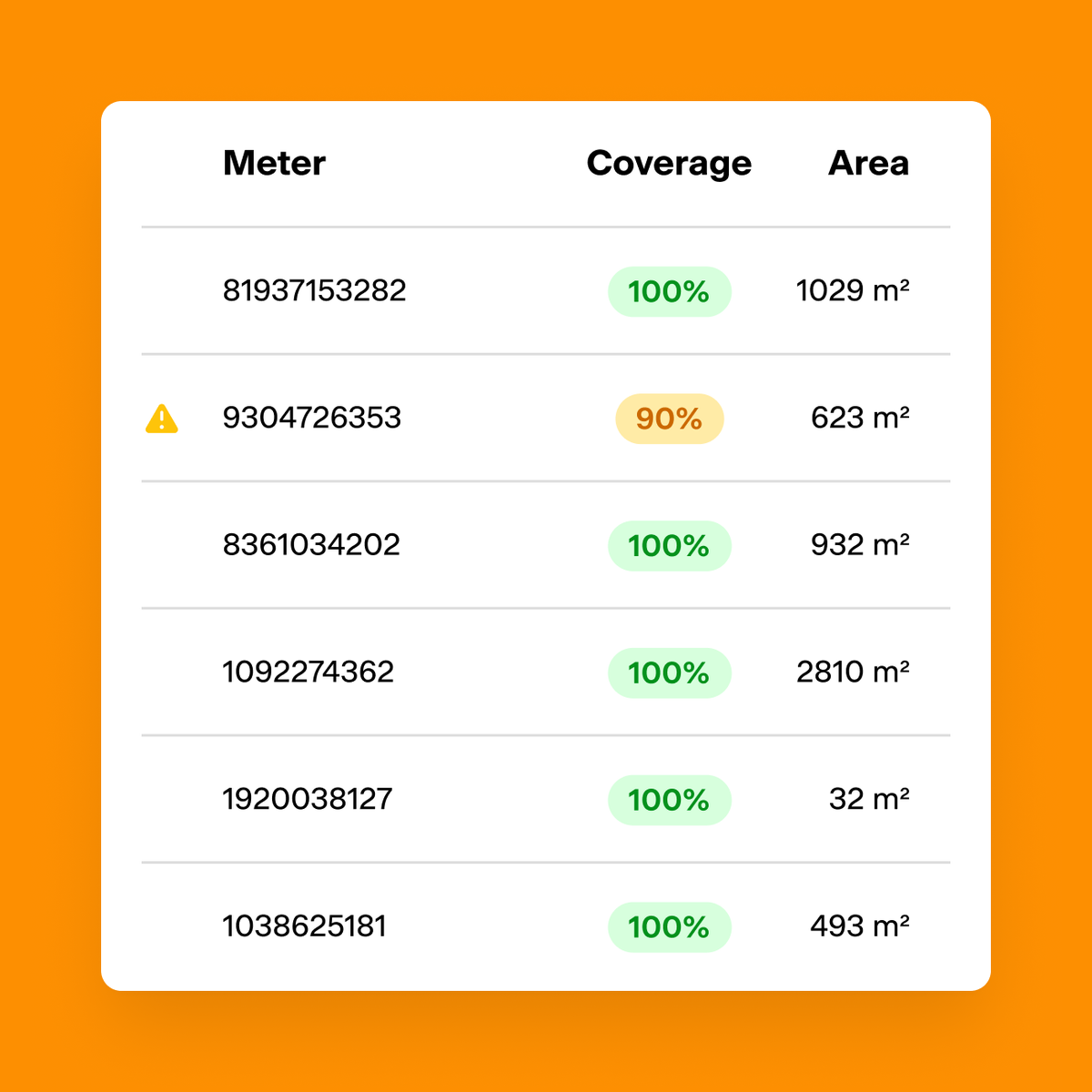
Perfecting your ESG data flow: From meters to analytics and reports
In today's rapidly evolving landscape of sustainability and technology, a staggering 70% of businesses find themselves unprepared for the looming reporting obligations. For real estate investors, balancing long-term goals with immediate compliance is vital for maintaining quality data. Early action is key, akin to financial transformations, to align ambitious sustainability objectives with practical execution, especially given the unconventional nature of ESG data.
Building a Robust Data Foundation
A solid data foundation enables slicing and dicing of insights to meet various reporting needs. However, when dealing with diverse data types such as electricity, water, waste, gas, supplier data, performance KPIs and social metrics, scattered across siloed systems, the big question is: Where do you start?
Meter Collection
Timely Data Capture: Establishing consistent and repeatable methods for data capture can significantly reduce time and increase the efficiency of reporting processes. For example, the Empire State Building employs an advanced building management system to capture real-time data from its various meters, ensuring accurate and timely information.
Smart Meter Integration: It is crucial to leverage smart meter companies specialized in different countries. These companies provide APIs that facilitate secure data transfer between systems, eliminating the cumbersome manual entry of utility bill data. Initially catalyzed by benchmarking laws, this approach now includes water and waste data—traditionally harder-to-track metrics. For instance, London-based smart meter company Etainabl provides seamless API integration for energy and water data, making it easier for property managers to collect and report their sustainability metrics.
Green Leases: Automating data collection from tenants through green leases is essential. Understanding the data requirements for various frameworks, benchmarks, or regulations will guide the investigation of necessary data. An example of this is the Sydney Opera House, which uses green leases to ensure tenants automatically provide utility data, simplifying the collection process and enhancing overall sustainability reporting.
Addressing Data Gaps: Poor quality data or inadequate quality controls can create gaps, leading to missed opportunities and lower-than-expected performance scores. Shadow metering—installing meters to capture whole-building data—can improve coverage and ensure complete data from installation, beneficial for future reporting cycles. For example, the California Academy of Sciences implemented shadow metering to capture comprehensive energy use data across their facility, leading to more accurate ESG reporting.
Processing Your ESG Data
Not all data is equal in ESG reporting. Processes that yield accurate data can alleviate the stress associated with reporting.
Standardized Calculations: Utilize the calculations provided by various data platforms. Since not all detailed calculations are defined by frameworks, these platforms have often done the work for you, encompassing frameworks like GRESB, SFDR, EU Taxonomy, CSRD, CSDDD, SECR, GRI, PCAF, INREV, EPRA, SASB, and IFRS.
Transparency and Auditability: Ensure transparency in data so auditors can retrace calculations and processes. Collaborate closely with auditors and align data retention and tagging policies with their requirements. Document assumptions, methodologies, and data sources for easy review by auditors, establishing a strong footing for future years when additional documented evidence may be required.
Error Reduction: Errors are more likely with multi-metric, multi-currency data. A platform that captures or reports data in multiple units of measure, while also providing strong data normalization and harmonization capabilities, can reduce uncertainties. The software that you choose should offer robust data normalization features, ensuring accurate and reliable ESG reporting.
Baseline Accuracy: Regardless of the chosen reporting framework, clarity on your baseline to measure progress over time is crucial. Ensuring an accurate and appropriate baseline is essential. For instance, British Land, a major property development and investment company, emphasizes the importance of accurate baseline data to track and report its sustainability progress effectively.
Self-Verification: Implement simple sense checks like year-on-year comparisons to spot any unusual percentage changes or data variations. Prologis, a global leader in logistics real estate, uses self-verification techniques to ensure the accuracy of its ESG data, identifying and addressing any discrepancies promptly.
Reporting
ESG reporting season can be stressful. To improve outcomes over time, celebrate wins after each reporting cycle and establish processes to learn from mistakes.
Gap Analysis: Platforms can conduct gap analyses between different reports, ensuring alignment among all reported data. Your ESG data management platform should help to identify and address gaps in reporting, ensuring comprehensive and accurate disclosures.
Data Transparency: Ensure data is easily accessible for third-party requests. With increasing EU regulations like CSRD and CSDDD, greater data transparency will be required.
Analytics
For real estate investors, controlling your data is crucial as stakeholders demand more detailed and publicly reported data.
Target Setting: Set achievable targets and ensure you are on track to meet them. When managing a diverse property portfolio, set clear and realistic sustainability targets, regularly review progress to ensure alignment with the ESG goals.
User Experience: The UX of visualizations is critical, especially for those without an ESG or data background. Good UX equips everyone in the organization to make data-driven decisions. The software platform should provide user-friendly visualizations, making ESG data accessible to all stakeholders within an organization.
Scoring and Focus: Scoring the vast amount of ESG data can help create focus in analytics and strategic decision-making. It’s important to concentrate on key ESG aspects, given the current resource constraints within most real estate investment companies.
By perfecting your ESG data flow—from meter collection to processing, reporting, and analytics—you can navigate the complex landscape of sustainability reporting with confidence. Establishing a robust data foundation and leveraging the right tools and processes will position your organization for long-term success in meeting sustainability objectives.